Trail Restrooms Closed
Restrooms located at the North intersection of Old Carriage Road Trail and Matildaville Trail are closed due a water leak. There are portable toilets available at this location. Restrooms located at the Visitor Center are open between 9-5.
Sat & Sun IF parking is full, entrance closes, no entrance until parking available.
Saturdays & Sundays with good weather, IF our parking lots fill we close the park entrance. (Georgetown Pike & Old Dominion Dr) We re-open when parking is available. No waiting, no street parking. Updates at Great Falls Park Facebook page.
| Title | Great Falls |
| Park Code | grfa |
| Description | At Great Falls, the Potomac River builds up speed and force as it falls over a series of steep, jagged rocks and flows through the narrow Mather Gorge. The Patowmack Canal offers a glimpse into the early history of this country. Great Falls Park ... |
| Location | |
| Contact | |
| Activities |
|
| Entrance fees |
Entrance - Private Vehicle
$20.00
Includes driver and passengers. Admits one single, private, non-commercial vehicle and all its passengers. Organized groups are not eligible for the vehicle permit. Also valid for entrance into the Chesapeake and Ohio Canal National Historical Park. Admission to Great Falls Park is valid for seven consecutive days including date of purchase.
Entrance - Motorcycle
$15.00
Admits one single private motorcycle and its passengers. Individuals 15 years of age and younger are admitted free of charge. Also valid for entrance into the Chesapeake and Ohio Canal National Historical Park. Admission to Great Falls Park is valid for seven consecutive days including date of purchase.
Entrance - Per Person
$10.00
Applies only to people entering by foot, bicycle, or horse. Individuals 15 years of age and younger are admitted free of charge. Also valid for entrance into the Chesapeake and Ohio Canal National Historical Park. Admission to Great Falls Park is valid for seven consecutive days including date of purchase.
Entrance - Non-commercial Groups
$100.00
Includes church groups, college/school groups, scouts, service organizations, military, etc.
All holders of annual passes and those under 15 years old will be exempt from payment of fees.
Non-Commercial Groups in vehicles with a capacity of 15 or less are charged the $20.00 vehicle permit. Vehicles with a capacity of 16 or more are charged a fee of $10.00 per person. Removal of seats from a vehicle does not then qualify for the lower rate.
The total fee will not exceed the $100 fee per vehicle.
Commercial Entrance - Van
$40.00
Vehicles with capacity of 7-25 passengers: $40. (No per person fee)
Commercial Entrance - Mini-bus
$40.00
Vehicles with capacity of 7-25 passengers: $40. (No per person fee)
Commercial Entrance - Sedan
$25.00
Vehicles with capacity of 1-6 passengers: $25 plus $3 per person.
Commercial Entrance - Motor Coach
$100.00
Vehicles with capacity of 26+: $100. (No per person fee)
|
| Campgrounds | Count: 0
|
| Places | Count: 16
Flood MarkerThis canal, skirting the 76-foot drop of the Great Falls on the Potomac, was the most demanding and complex of the five canals built by the Patowmack Company. 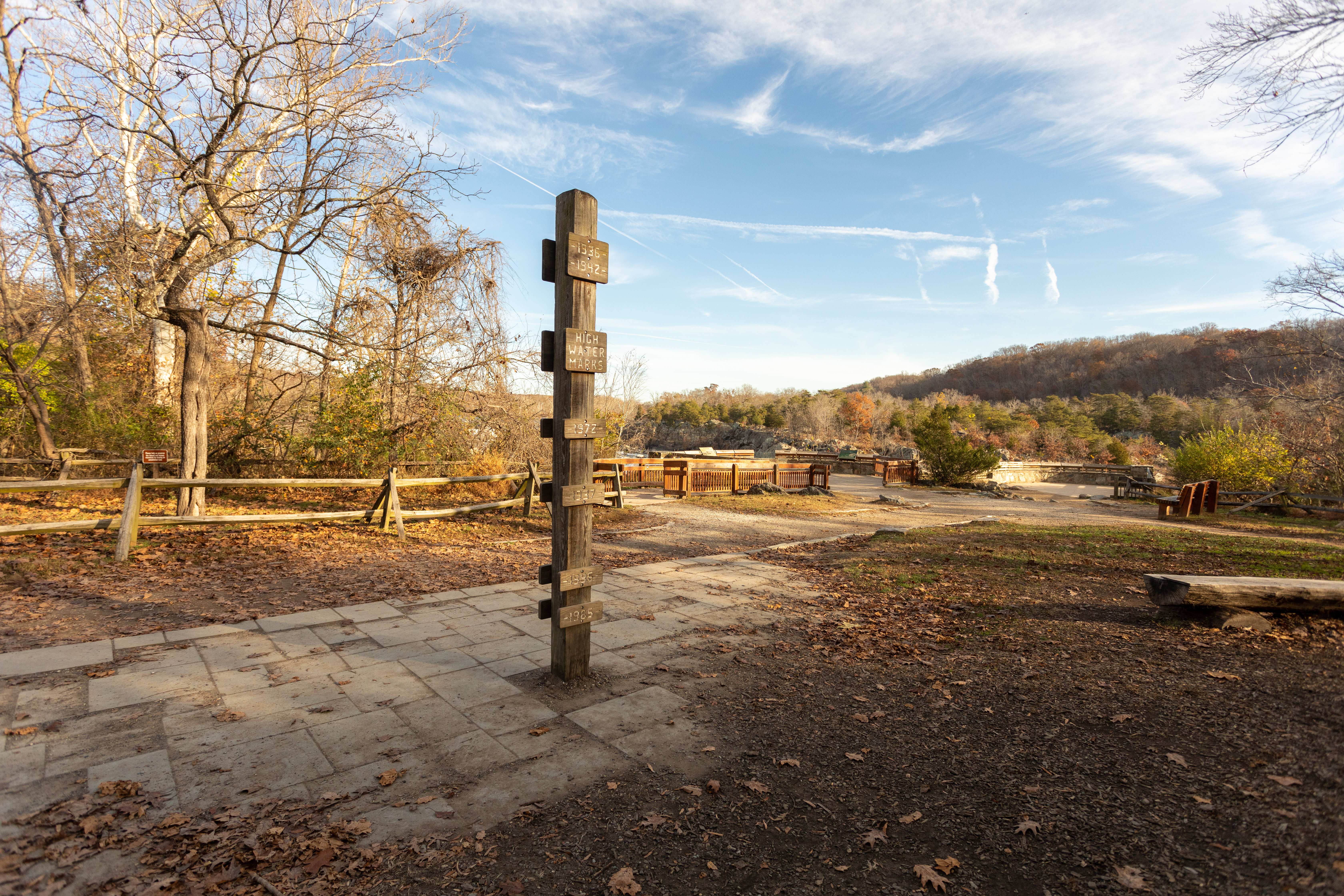
Great Falls Overlook 1This overlook is located to the left of the south end of the Visitor Center. It is the closest you can get to the Falls themselves. 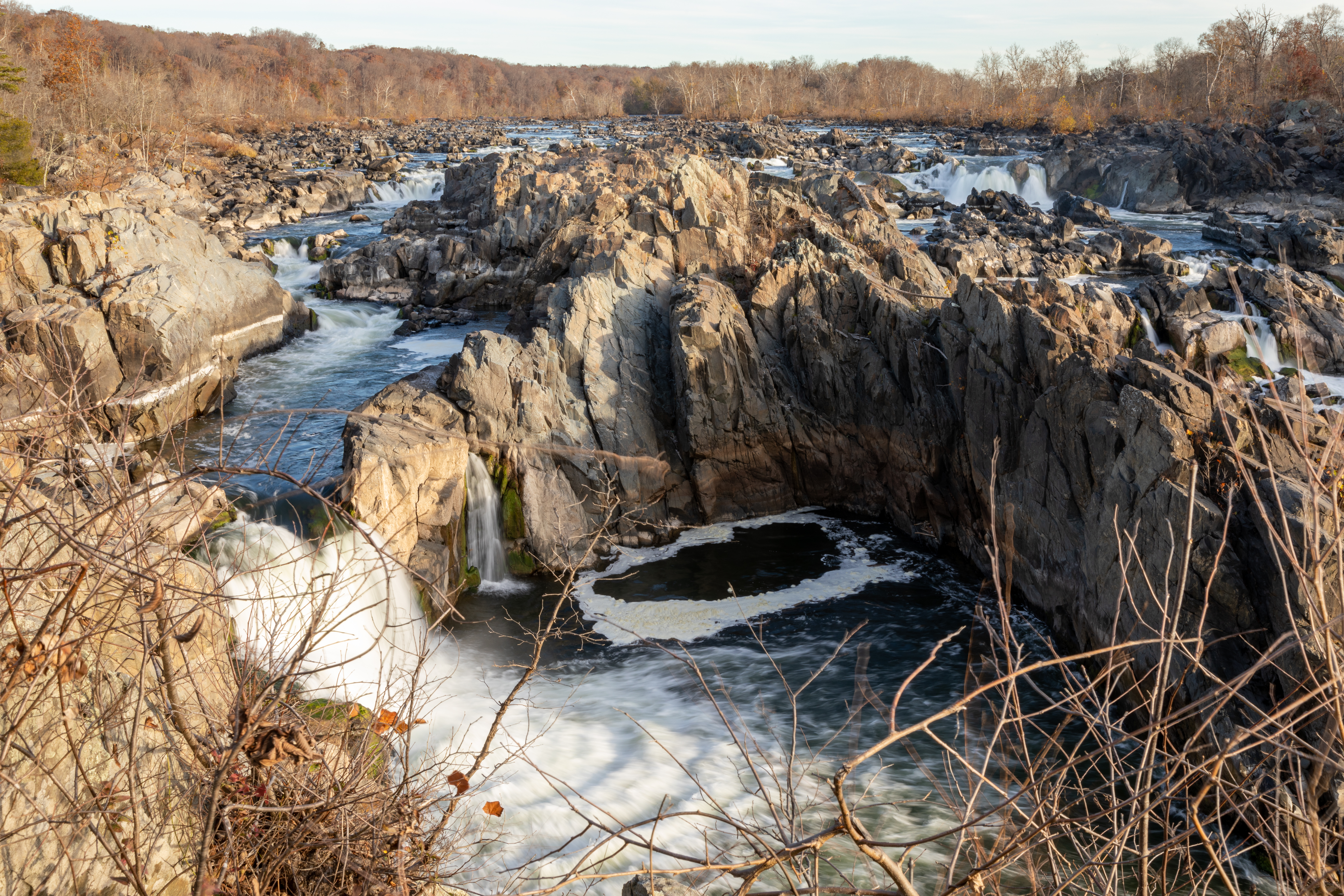
Great Falls Overlook 2This overlook is located further down the trail. Most of the waterfall can be seen from this overlook. 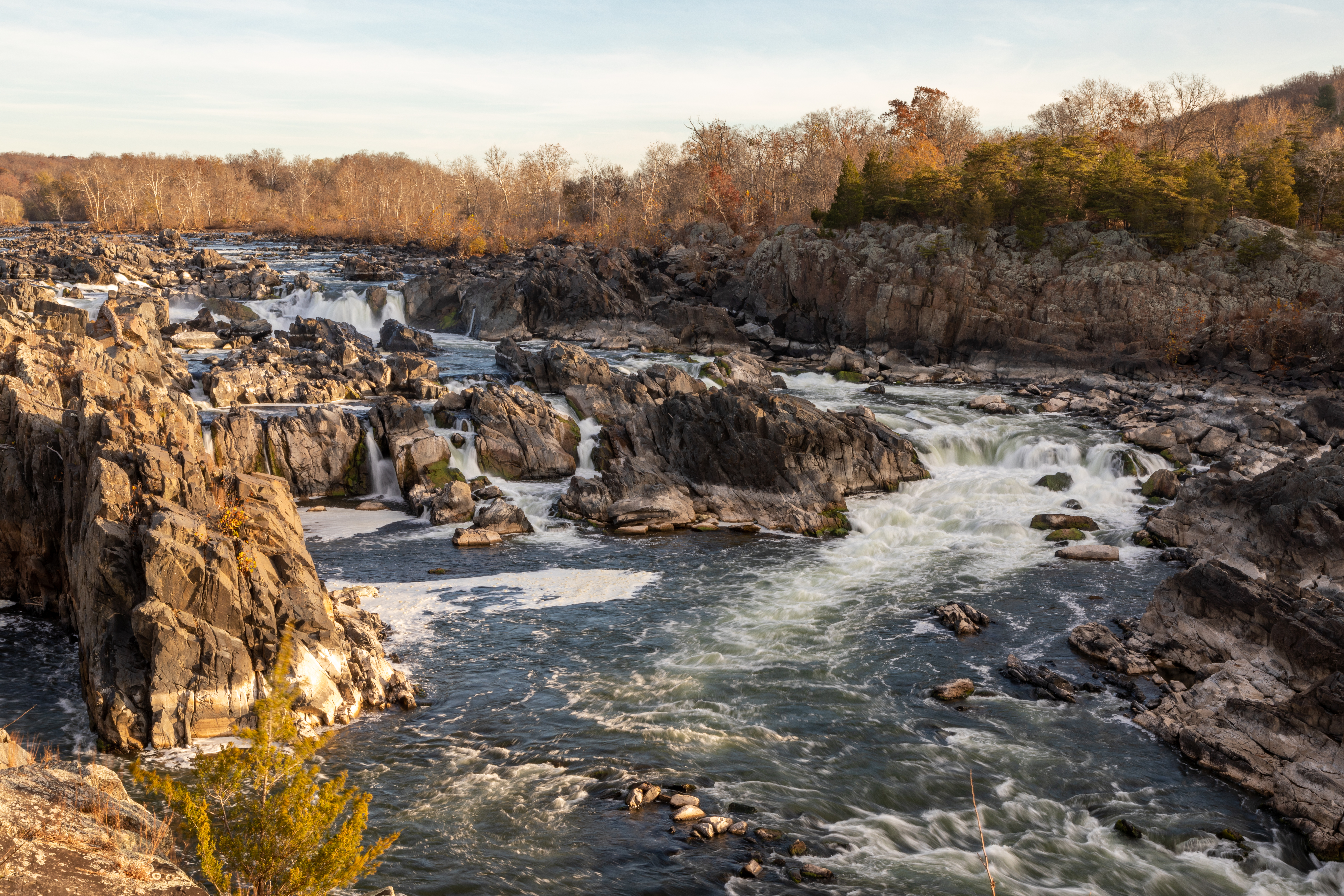
Great Falls Overlook 3Two viewing platforms at Overlook 3 provide the best view of Great Falls. 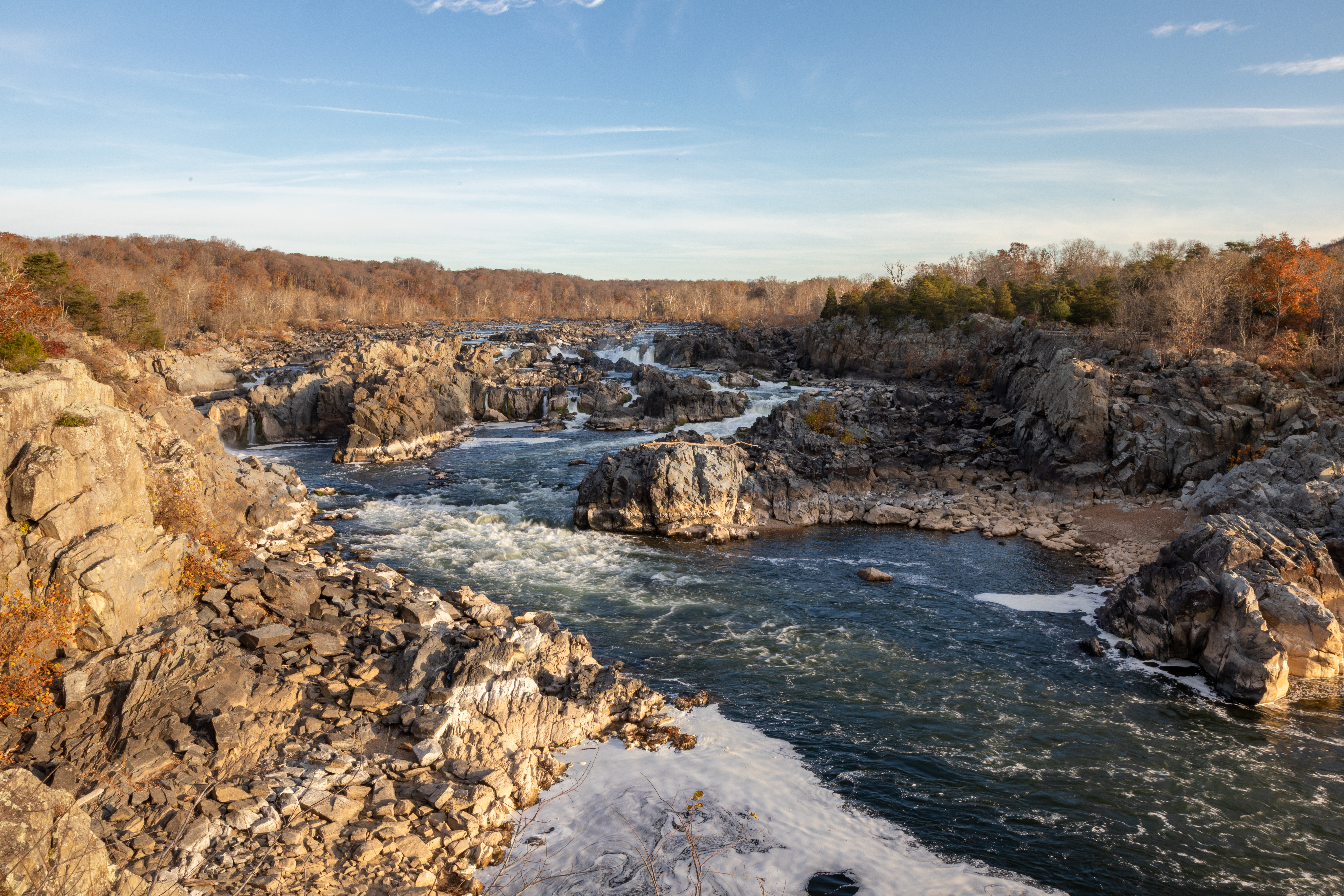
Great Falls Park Fee BoothGreat Falls Fee Booth. 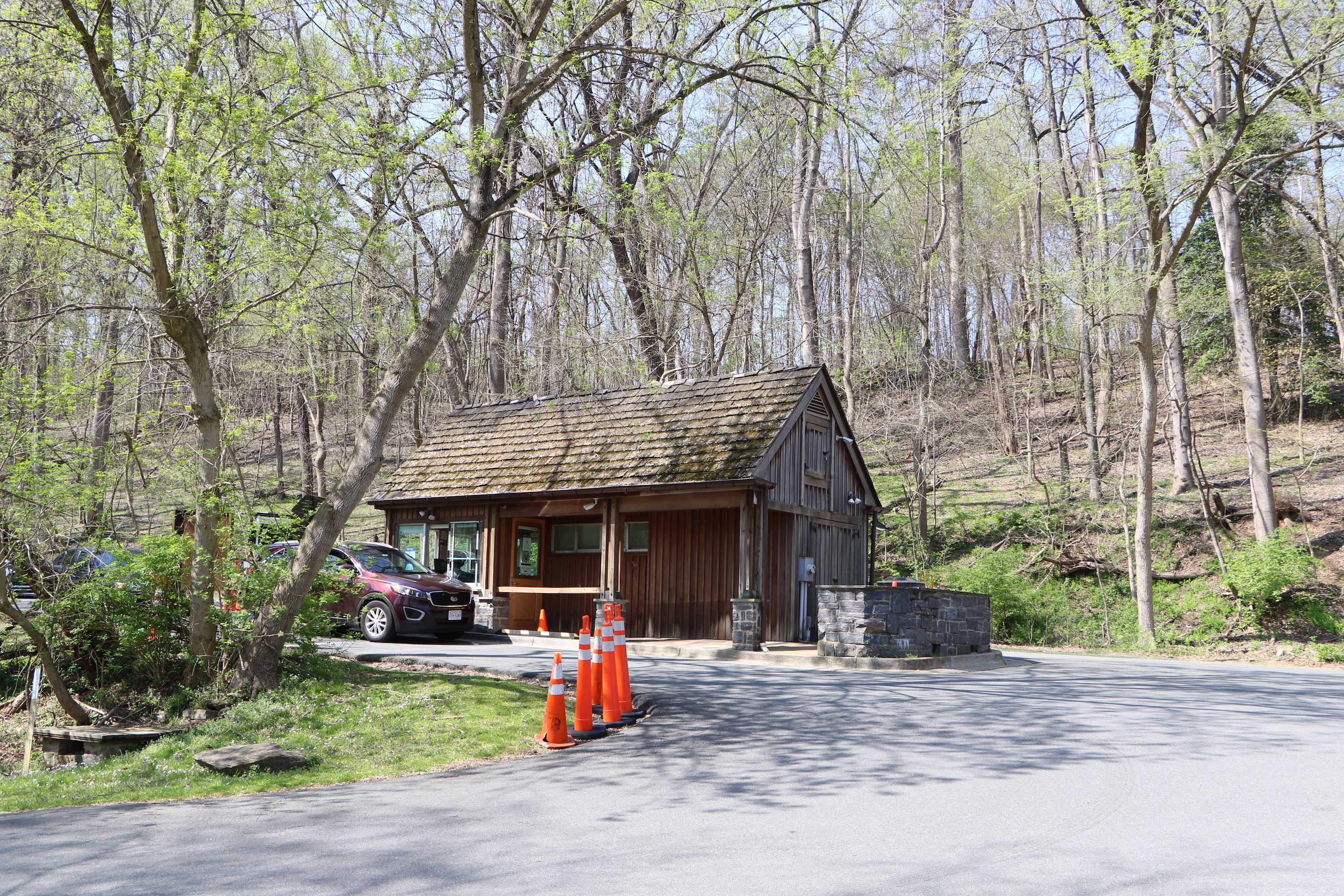
Information Panel: A Globally Rare EnvironmentLook around you. Have you noticed the unusual landscape here? Because of this landscape's wild river and rocky terrain, this is one of the country's most biologically diverse areas. Bedrock terraces high above the river, precarious ledges and floodplains have become a fragile home to over 30 distinct plant communities, three of which are not found anywhere else in the world. What has and continues to cause this diverse, rare life to exist? The river before you is the answer. 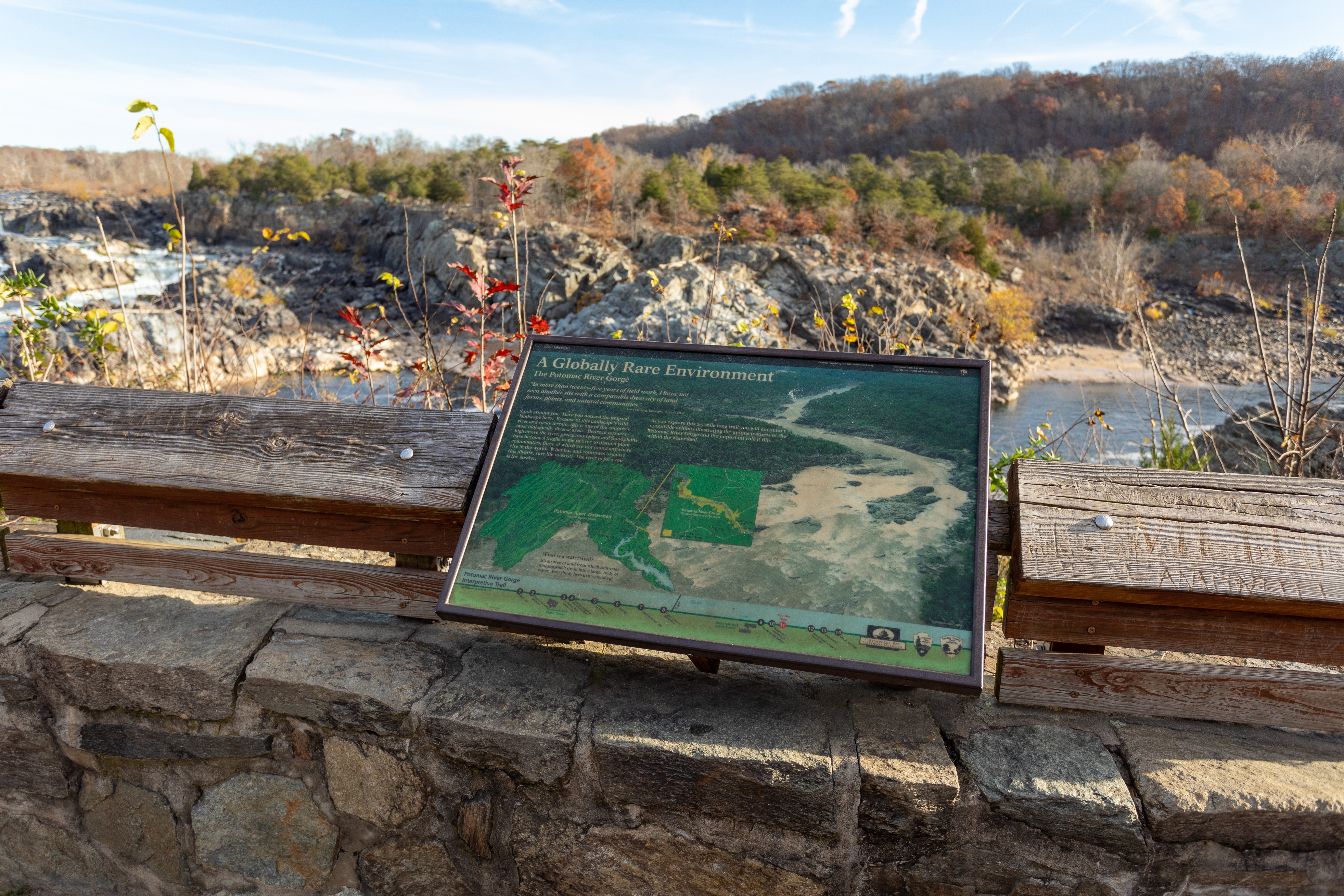
Information Panel: Explore A Trail NetworkWelcome to Great Falls Park. We hope that you enjoy your time exploring the Potomac River Gorge, but please remember to keep your own safety in mind. If you aren't adapted with long sturdy legs and wide spreading toes like we Herons, it will be easy for you to slip off the rocks at the river's edge of get carried away by the swift currents or whirlpools. Enjoy your visit and please come again! 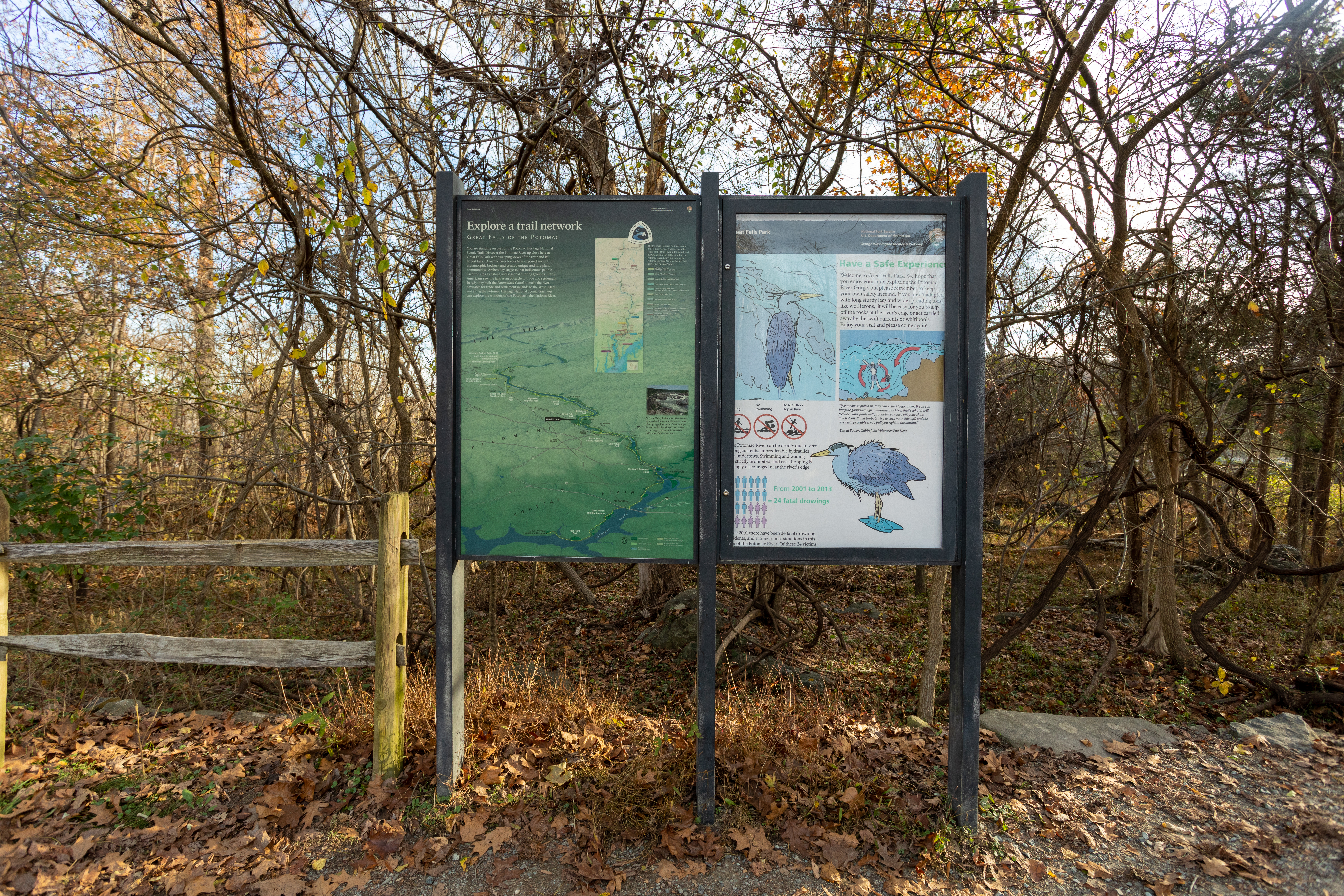
Information Panel: Life Under the SurfaceThe Potomac River travels 383 miles from its headwaters to the Chesapeake Bay. Migratory fish depend on its constant flow to survive. The American Shad symbolizes the struggle that many aquatic organisms face when trying to find a healthy and dependable habitat to breed. 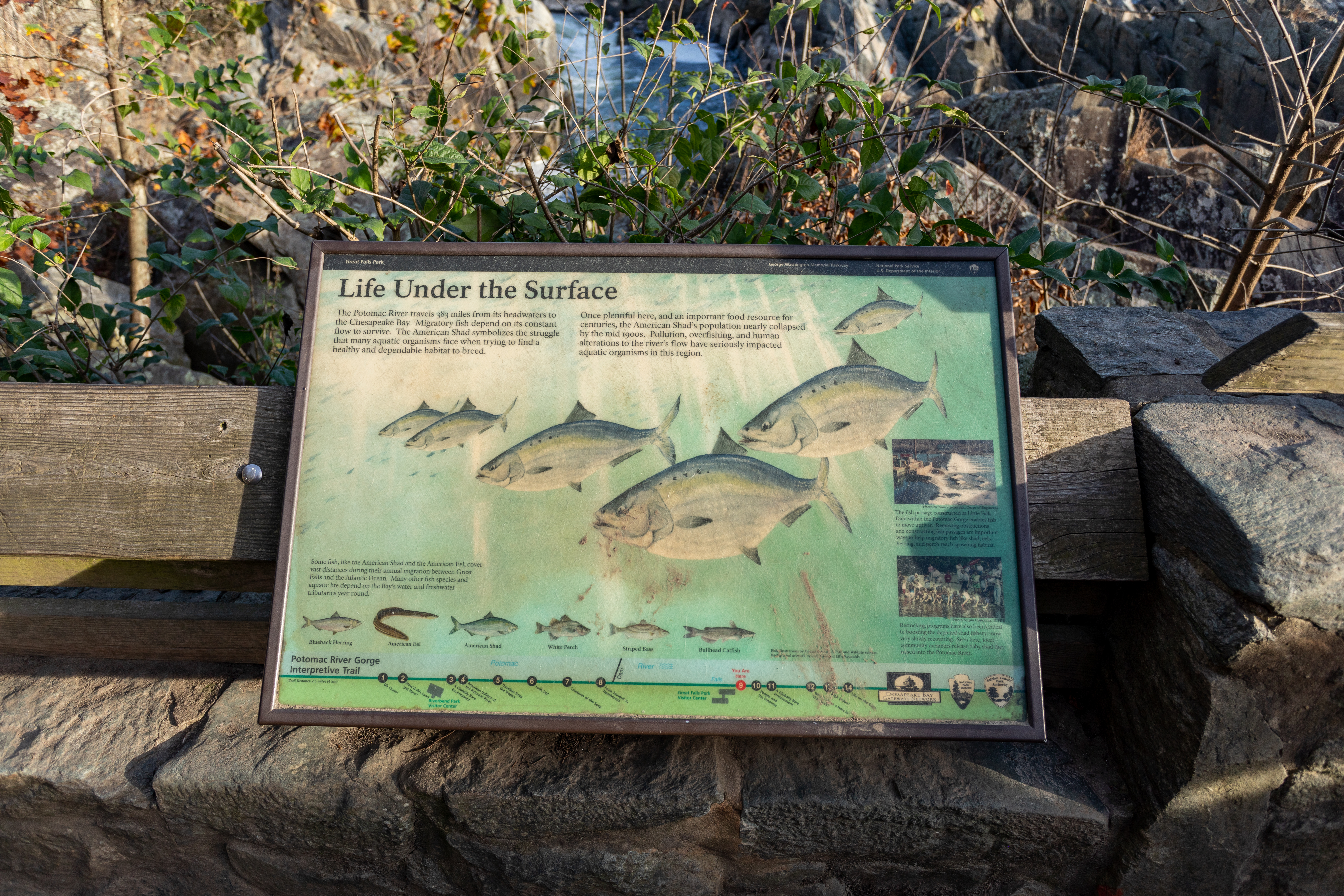
Information Panel: People and the PotomacThe Potomac River is the second largest watershed feeding the Chesapeake Bay. Early peoples depended on the river for food and made their homes along its banks. European settlers saw the river as a source for transportation, expansion, and settlement. 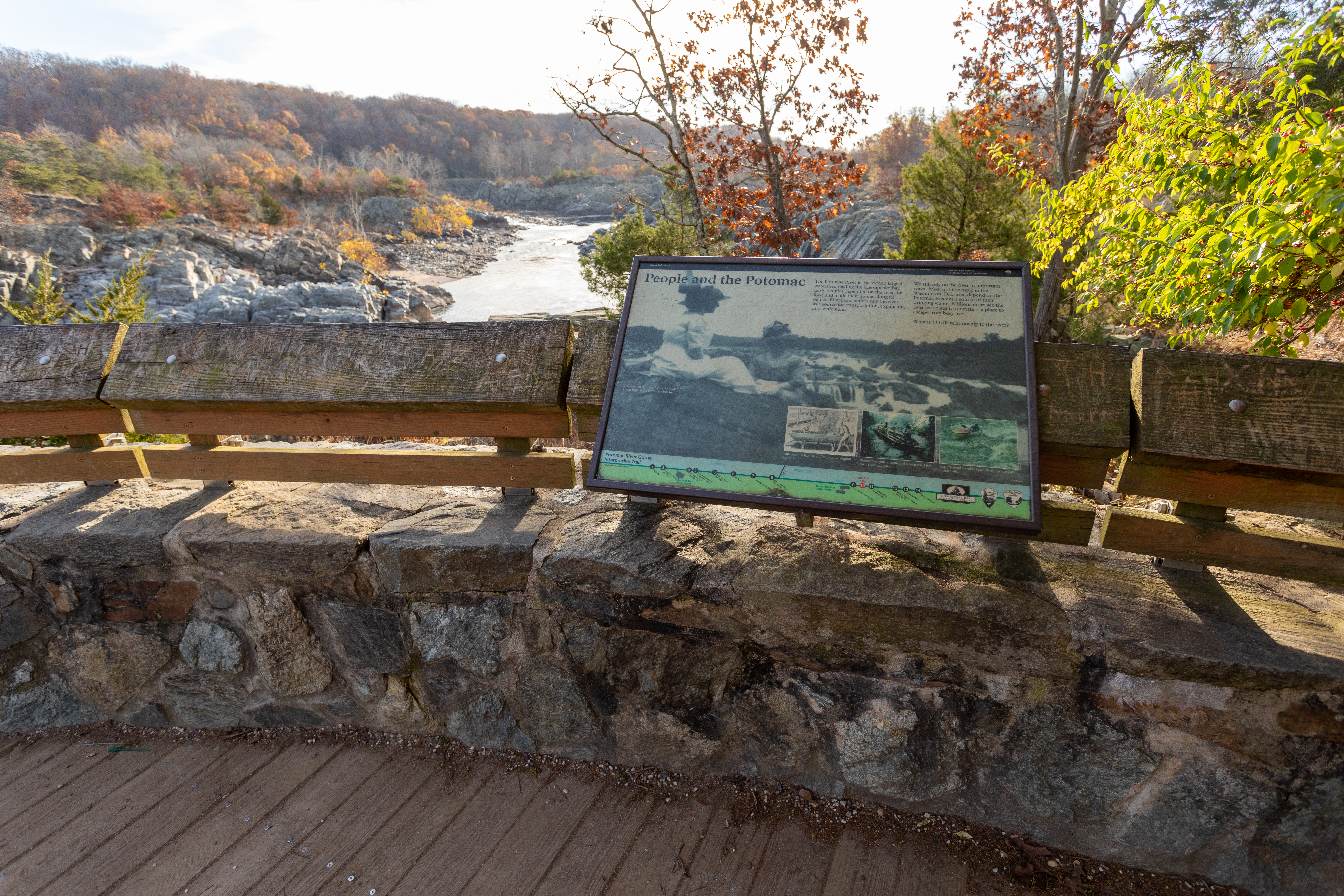
Information Panel: River of ChangeThe Potomac River begins as a small spring near Fairfax Stone, West Virginia. Like a giant funnel it gathers water from Pennsylvania, West Virginia, Maryland, Virginia, and the District of Columbia as it travels 383 miles to the Chesapeake Bay. 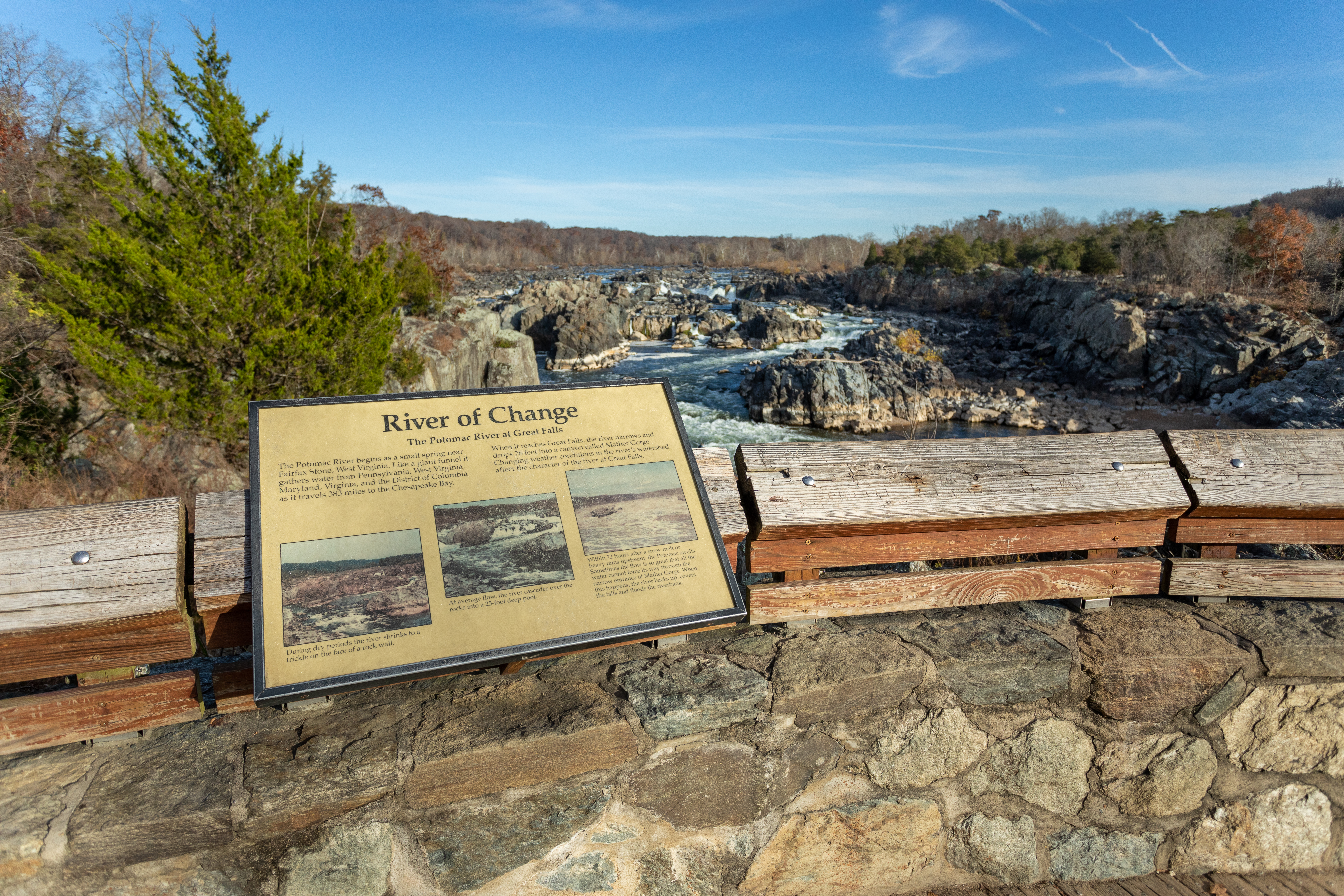
Information Panel: Something More than a StatueBefore World War II, there were no national memorials honoring American veterans. This was the first. Felix de Weldon was working for the Navy when he first saw the flag-raising photo. Powerfully inspired, he started work. He created his first small statue in only 48 hours. He then secured approval from the Corps and Congress to make something grander. 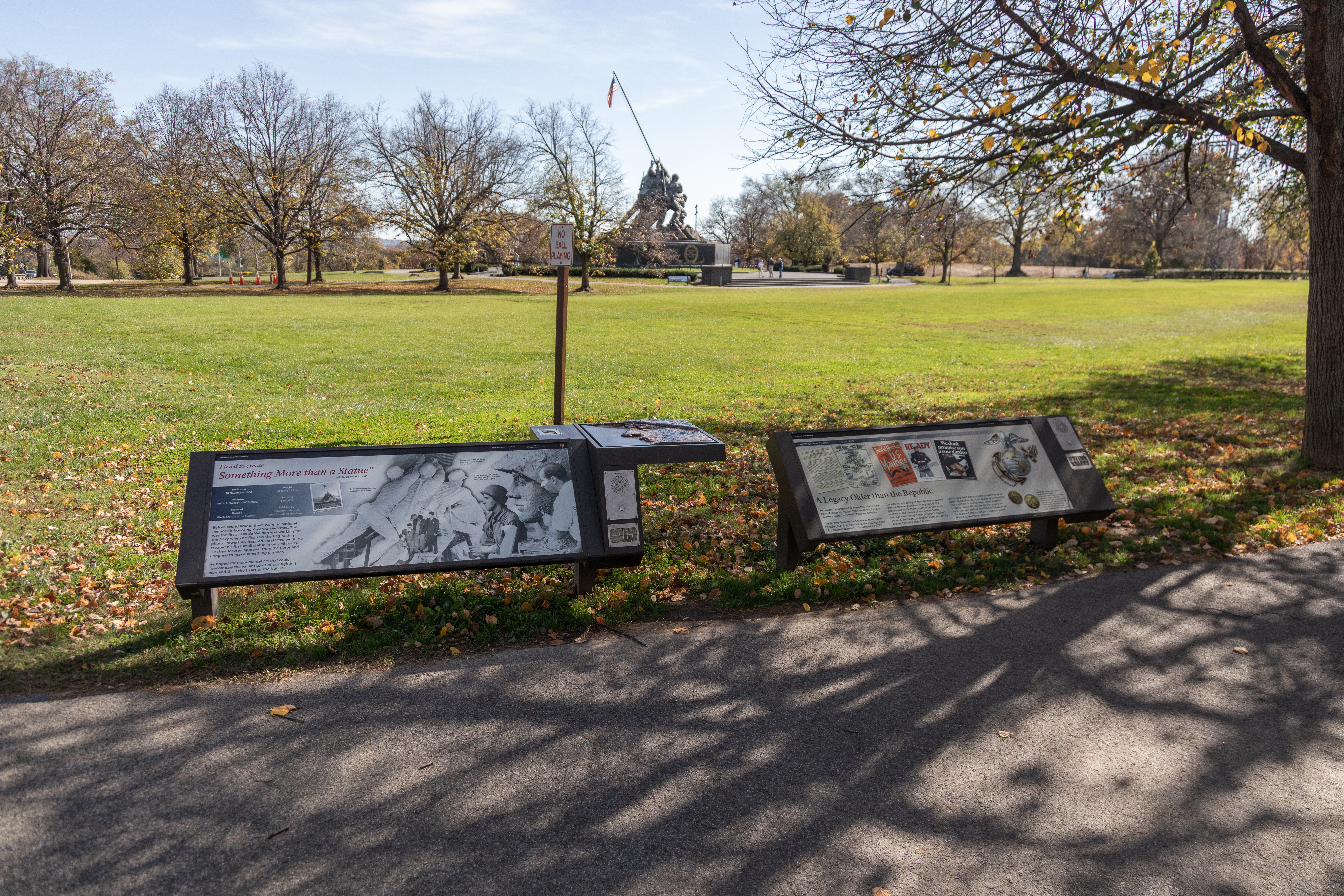
MatildavilleThese rocks mark the site of a building of the now-vanished town of Matildaville. Founded in 1790, the town was planned as an industrial community which would profit from its location on the canal. It once boasted a forge, gristmill, store, storage buildings, some homes and an inn, but it could not survive the closing of the canal in 1830. 
Pawtomac Canal Company HouseThese rock walls mark the site of a house built in the late 1790's by the Patowmac Company. Intended for the Canal Superintendent and his family, the house took so long to build that only one of the superintendents ever lived in it. Later it was occupied by the canal lock-tenders. 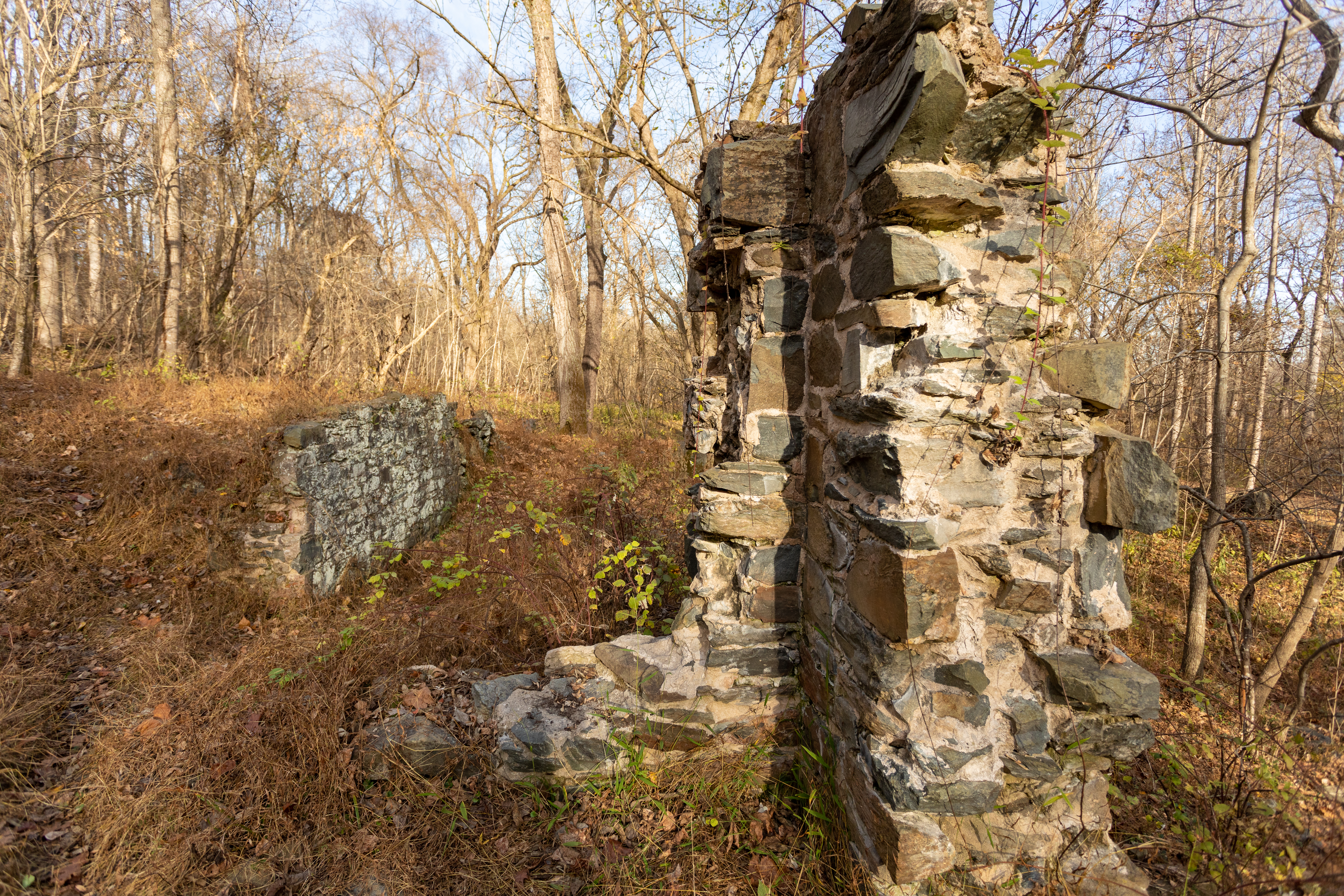
Pawtomac Canal Holding BasinSince entering the woods, you have been walking through what was the holding basin of the Patowmac Canal. Water held here by the wooden gates was used to fill the locks for boats locking through. 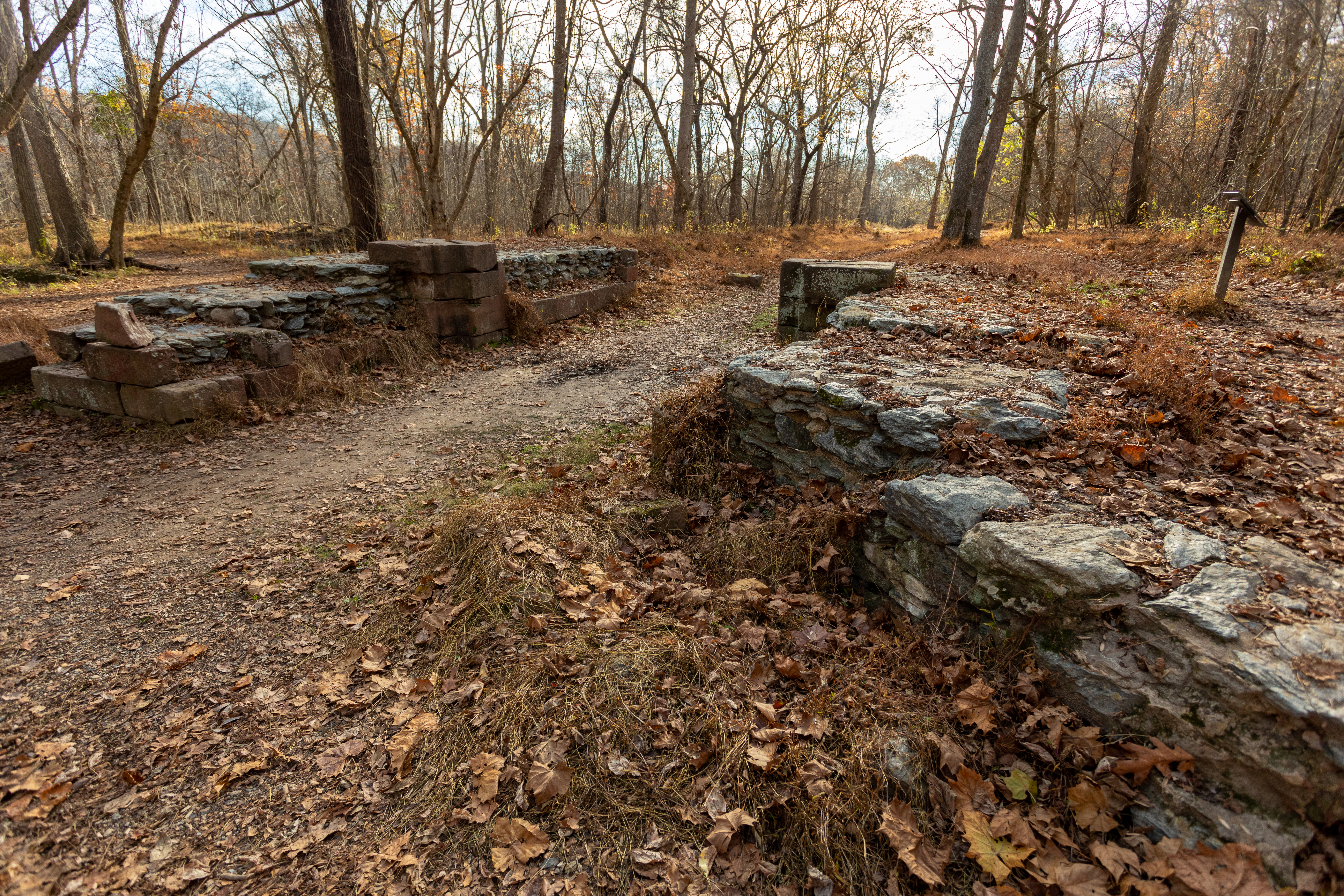
Potowmack CanalThe Potowmack Canal Historic District consists of the largest, longest and most intact remains of the Potowmack Canal, built between 1786 and 1802, and the ruins of the small associated town of Matildaville. The development of the Potowmack Canal required interstate cooperation and the canal planners saw that the new republic would require similar collaboration thus inspiring the unification of the colonies to become the United States of America. 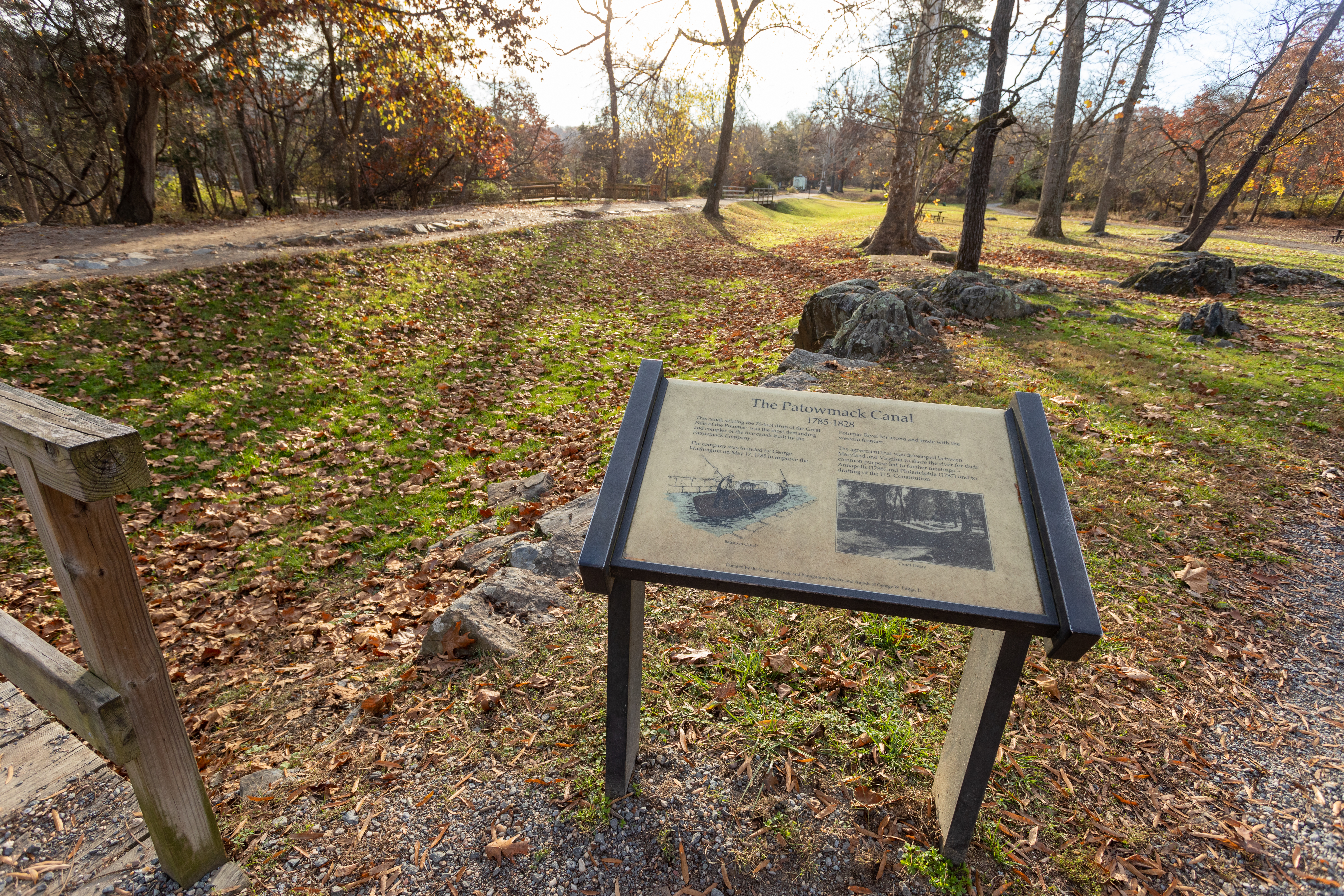
Restrooms at Great Falls ParkRestrooms at Great Falls Park 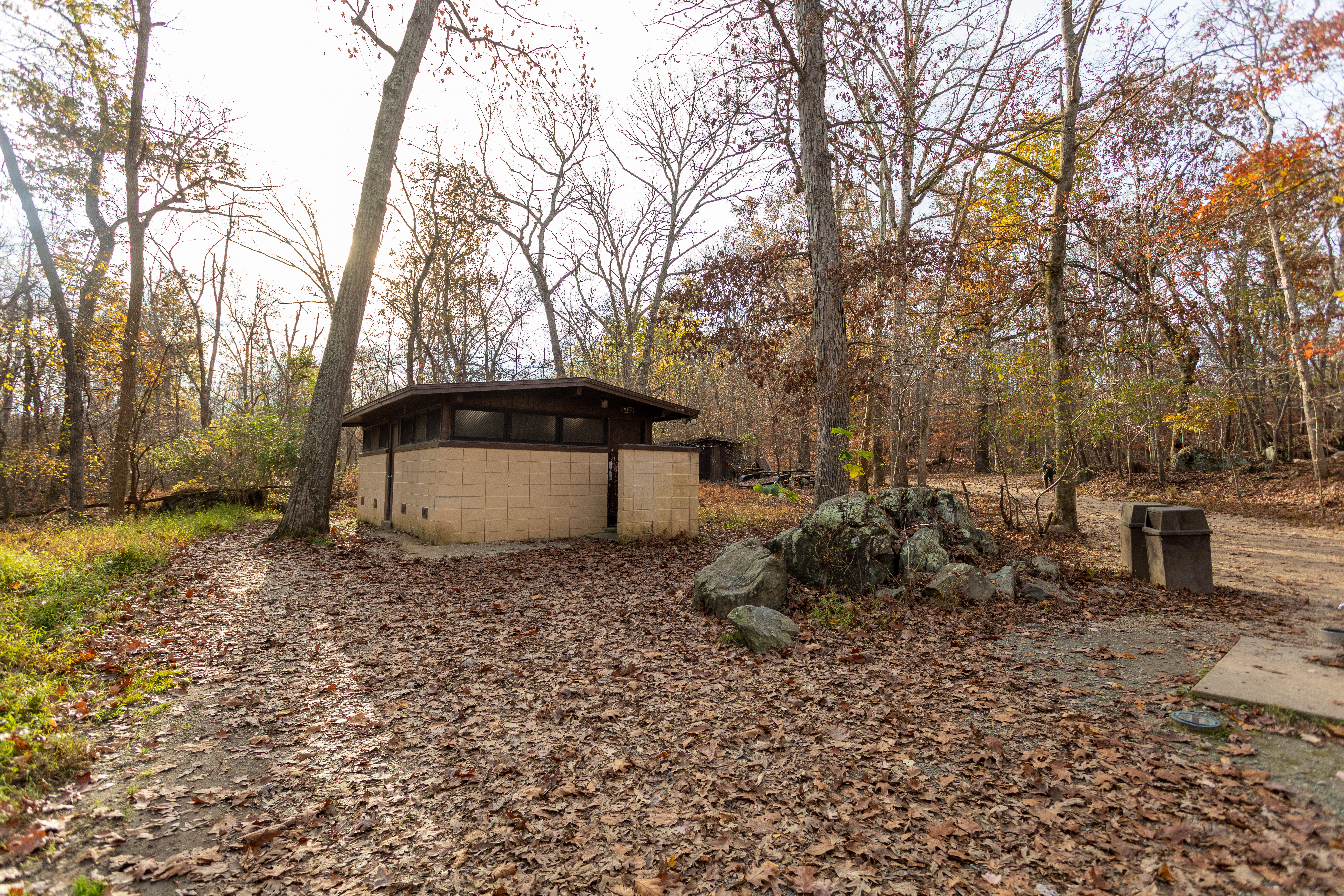
|
| Visitor Centers | Count: 1
Great Falls Park Visitor Center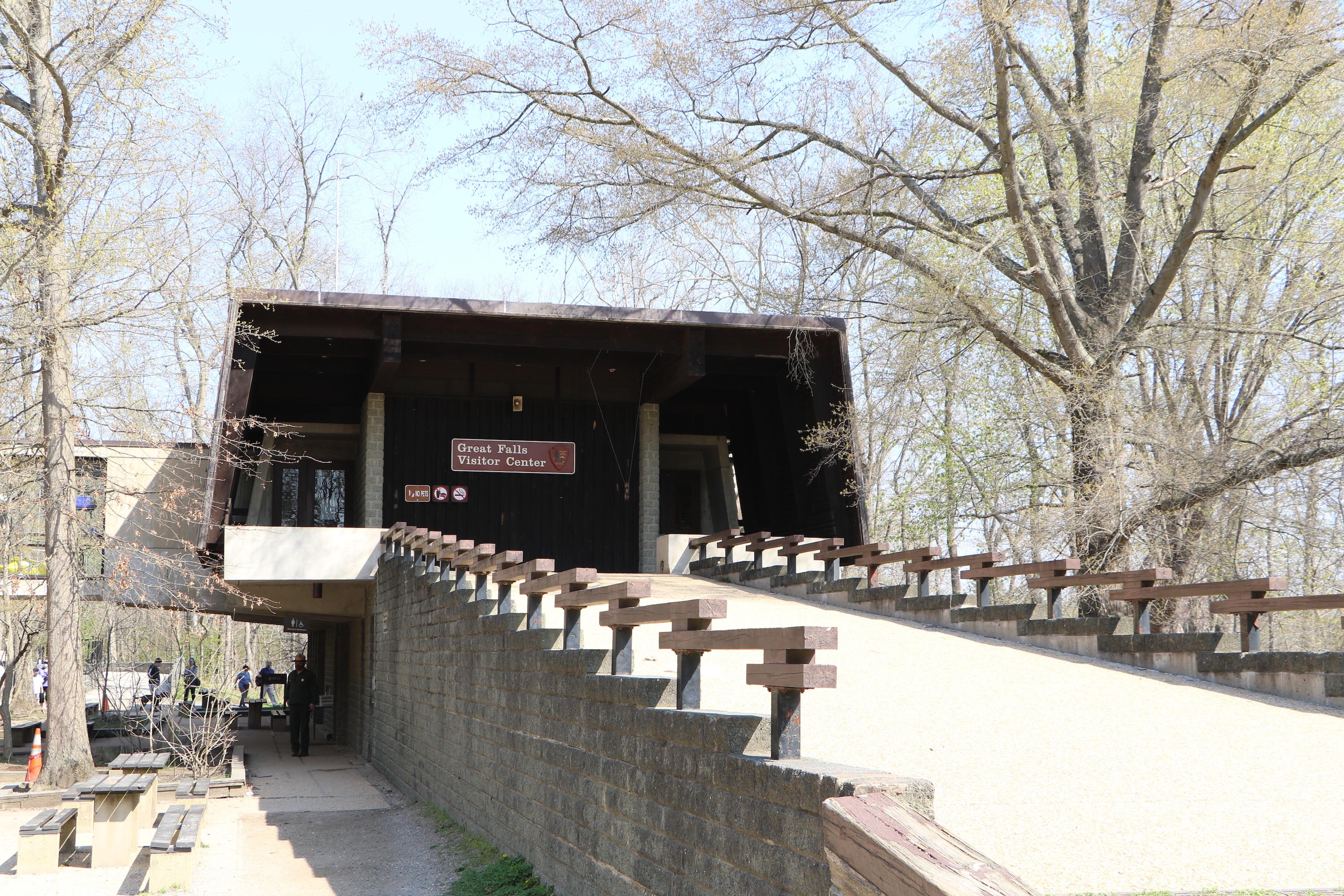
|
| Things to do | Count: 2
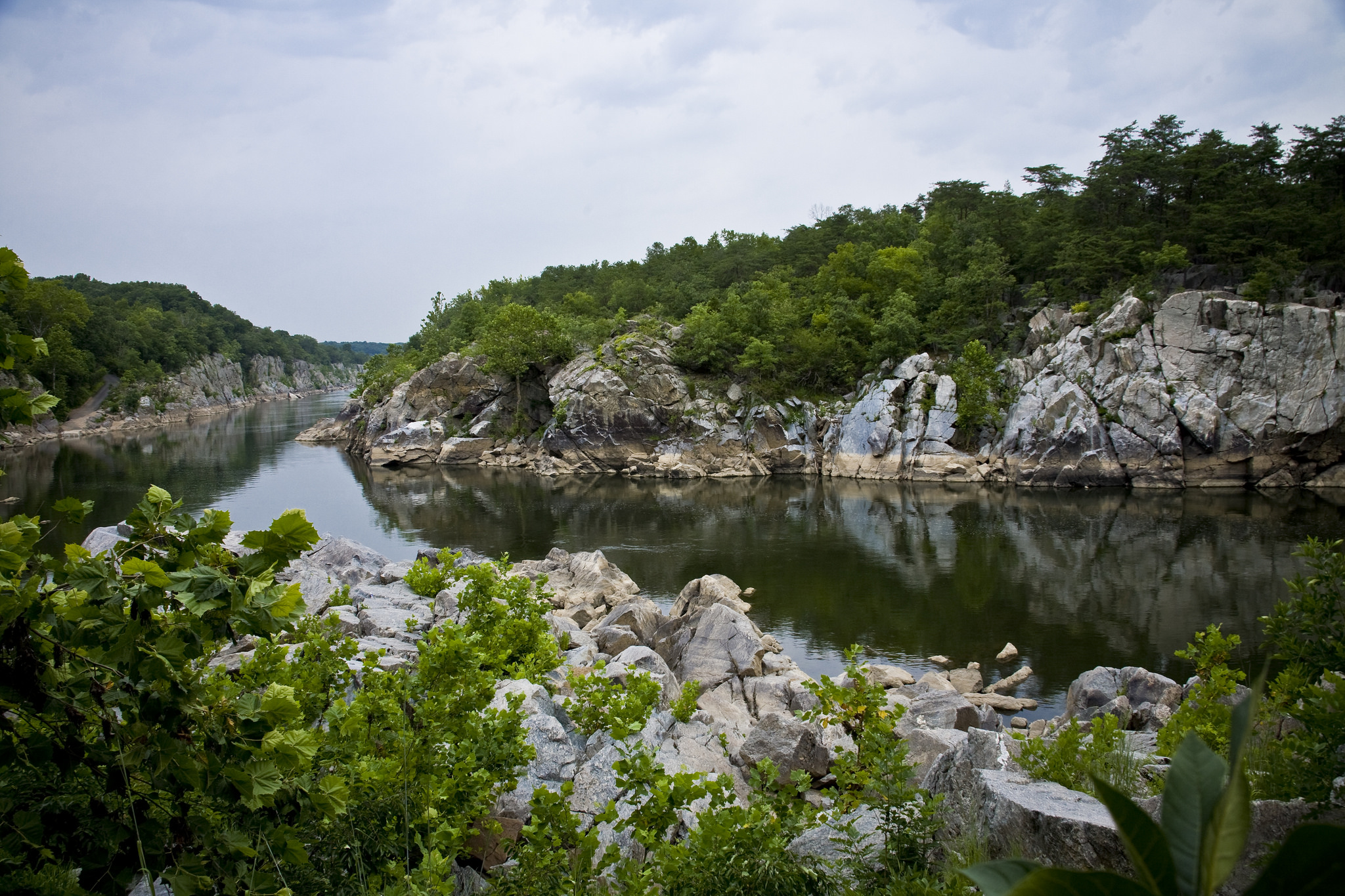
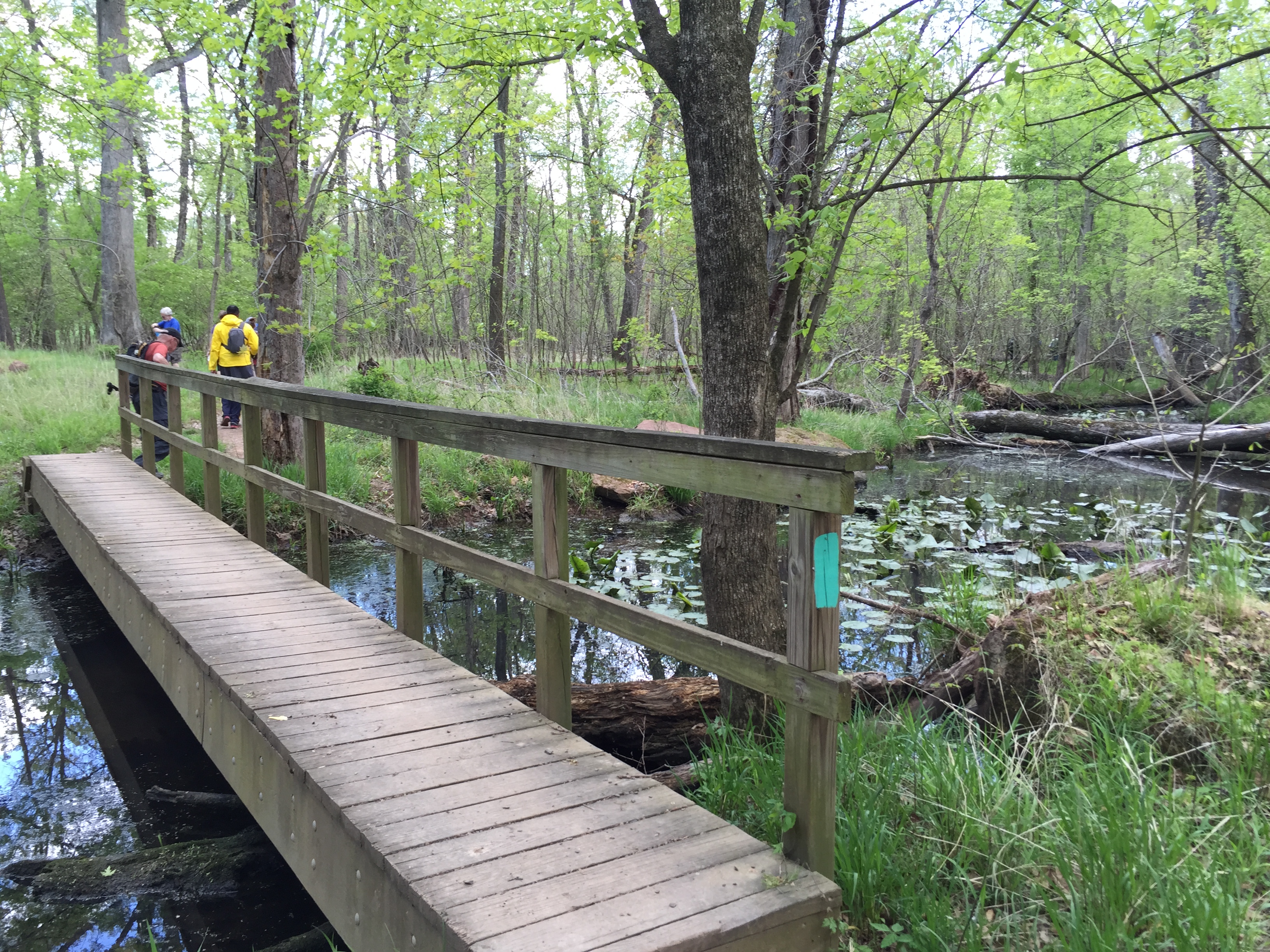
|
| Tours |
Count: 0
|
| Articles |
|